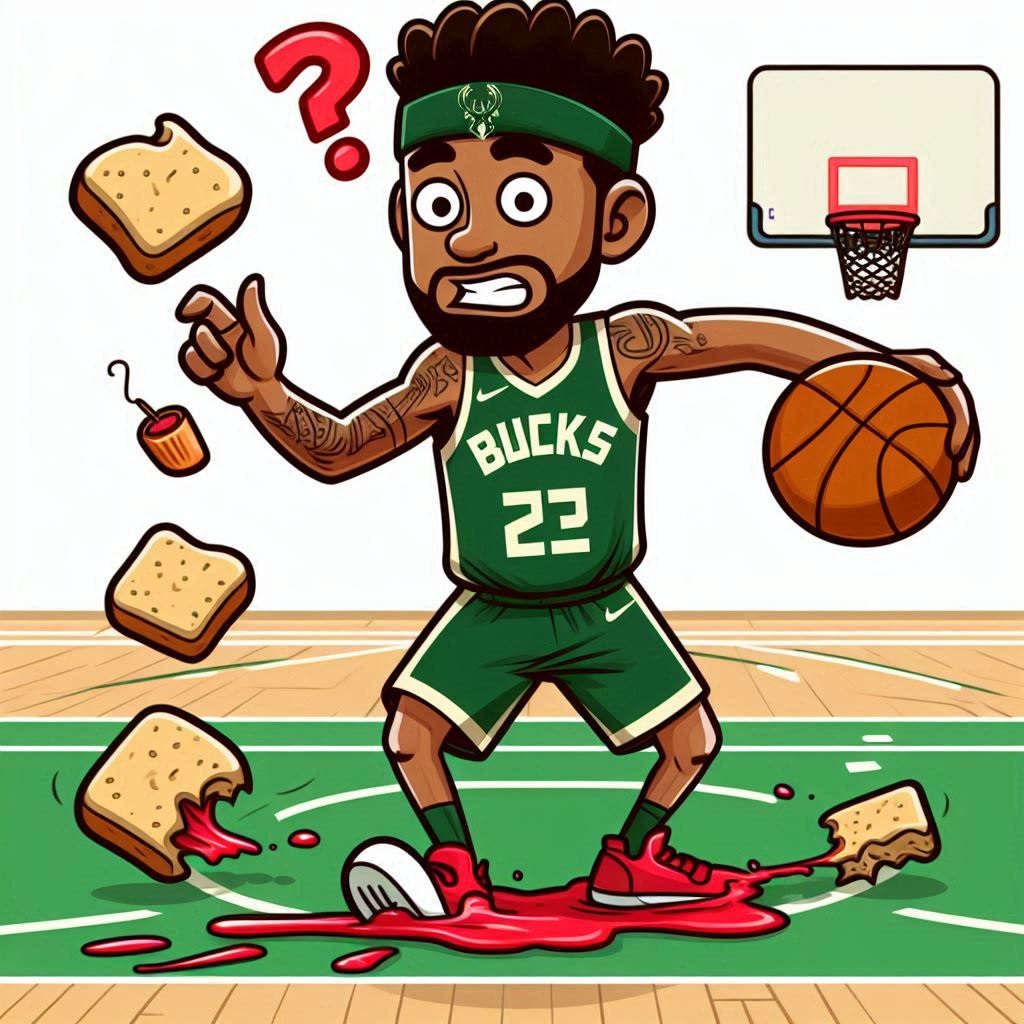Damian Lillard’s performance dipping when Giannis Antetokounmpo is on the floor isn’t a straightforward “he’s worse” situation—it’s more about fit, usage, and how their games mesh (or don’t) on the Milwaukee Bucks as of February 26, 2025. Lillard joined the Bucks in 2023 to pair with Giannis, forming a superstar duo. Yeah, remember Giannis shouting about “winning it the right way” and not wanting to be part of a superteam? Well the on-court results have shown some serious lack of basketball IQ on Giannis’ part. Let’s break down why Lillard’s numbers and impact tend to take a hit when sharing the court with Giannis, based on stats, playstyle clashes, and team context.
We all know that Dame was Giannis’ choice. As was losing Jrue. As was trading Khris. So let’s take a closer look at the first of these three wrong decisions.
First, look at the numbers this season. Lillard’s averaging 25.8 points, 7.2 assists, and 4.5 rebounds overall, with a 42.9% field goal percentage and 35.8% from three. But in lineups with Giannis, his scoring drops slightly—per NBA advanced stats, Lillard’s usage rate falls from 31.2% when Giannis is off to around 27% when they’re together. Giannis, a ball-dominant force (32.7 points, 11.7 rebounds, 6.2 assists), commands the offense with a 33.8% usage rate. Both thrive with the ball in their hands—Lillard as a pick-and-roll maestro, Giannis as a freight train in transition and the paint. (And I am not using the term “freight train” in a positive way here. He misses way too many at the rim, waaay too many free throws and he ruins the flow by playing like that. )
When they share the floor, Lillard often cedes primary creation duties, shifting to more off-ball roles like spot-up shooting, which isn’t his natural strength. Let’s re think that, eh? The experienced ball handler cedes to the forward that leads in travelling and other violations…
Their playstyles amplify this. Lillard’s elite skill is his deep-range shooting and ability to break down defenses in isolation or pick-and-roll sets—he’s historically taken 30+ footers and orchestrated late-game possessions. Giannis, meanwhile, clogs the paint and excels driving downhill, but his lack of a reliable jumper (20% from three this year) lets defenses sag off him, shrinking the floor. Opponents build a “wall” against Giannis, packing the lane, which can cramp Lillard’s driving lanes and force him into contested mid-range shots or kickouts. Cleaning the Glass data shows the Bucks’ offensive rating drops to 114.2 with both on, compared to 117.8 with Lillard alone—suggesting less efficiency together.
Spacing is a big culprit. Giannis’s presence draws double-teams inside, but without consistent outside shooting from him, defenses don’t respect the Bucks’ perimeter as much. Lillard’s three-point attempts per game are down to 8.2 this season from 10.5 in his last Portland year, and his catch-and-shoot opportunities haven’t fully clicked—his effective field goal percentage on threes dips from 58% solo to 54% with Giannis, per Second Spectrum tracking. Milwaukee’s supporting cast (like Brook Lopez or Khris Middleton) helps, but the lack of synergy between the stars leaves Lillard less room to operate his preferred game.
Defensively, it’s not a huge factor, but it’s worth noting. Lillard, at 6’2” and 34 years old, isn’t a lockdown guy—he’s targeted in switches, averaging 0.7 steals but often a step slow. Pairing them means opponents attack Lillard, pulling Giannis into help situations that can disrupt their rhythm. This doesn’t directly make Lillard “worse” offensively, but it tires him out, potentially sapping his scoring punch.

Then there’s the adjustment factor. In Portland, Lillard was the unquestioned alpha, running 35-40 minutes of heliocentric offense. With Giannis, he’s adapting to a co-star role under coach Doc Rivers, who leans heavily on Giannis’s physicality. It is hard not to emphasize the hole that the Bucks have dug themselves into by promoting Giannis as the ultimate MVP player all the time. The pressure on Dame is unfair and constant from day one.
Lillard’s assist numbers creep up with Giannis (7.5 vs. 6.8 without), showing he’s facilitating more, but his scoring efficiency takes a hit—true shooting percentage drops from 60.1% solo to 57.8% together. He’s less comfortable deferring or playing second fiddle, especially when Giannis’s freight-train drives don’t always set up Lillard’s preferred catch-and-shoot looks. All too often Giannis simply gets caught up in traffic and makes a bad desperation pass with no clock left and every opponent 100% certain that Dame has to take that shot.
Contrast this with Giannis’s prior pairing with Khris Middleton, a better spacer (38.5% from three this year) who complemented Giannis by stretching defenses without needing the ball as much. Lillard’s ball-dominant style overlaps with Giannis’s, and neither is a natural off-ball mover like a Steph Curry. Fans often point this out—some argue Lillard looks “lost” or “disengaged” when Giannis dominates, a sentiment echoed in games like their February 25 loss to Houston, where Lillard shot 5-for-14 with Giannis on.
It’s not that Lillard’s inherently worse with Giannis—it’s that their strengths haven’t fully synced. Lillard’s at his best creating in space; Giannis consumes space. Until the Bucks tweak their scheme—more stagger minutes, better spacing lineups, or Lillard embracing off-ball movement—the numbers and eye test suggest he’s less effective in this tandem than he could be alone.
For me the biggest problem is how everyone treats Dame. As if Giannis is too sacred to criticise. It is always Dame’s fault if the Bucks lose. This is inaccurate and unfair. Dame has regretted being traded for sure as he is wasting his last good years on a team that clearly cannot work with a Giannis who lacks the IQ to change.
